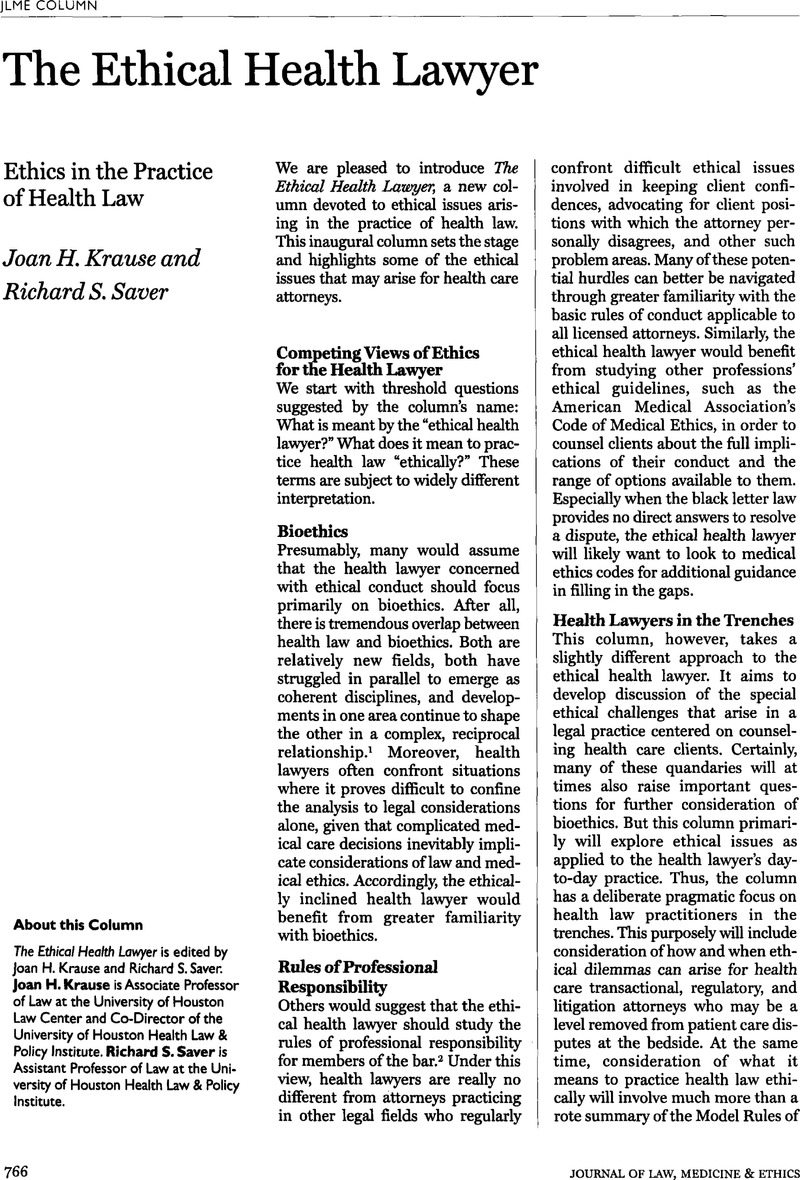Crossref Citations
This article has been cited by the following publications. This list is generated based on data provided by Crossref.
Perry, Joshua E.
Moore, Ilene N.
Barry, Bruce
Clayton, Ellen Wright
and
Carrico, Amanda R.
2009.
The Ethical Health Lawyer: An Empirical Assessment of Moral Decision Making.
Journal of Law, Medicine & Ethics,
Vol. 37,
Issue. 3,
p.
461.



